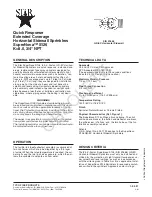
To fully utilise the long-term durability of ceramic tiling, whether heated or not, it is important
that the design, construction and preparation of the subfloor is carried out correctly.
It is essential that the subfloor be sufficiently rigid to support the ultimate weight that
it will have to bear without movement or deflection.
The choice of products for subfloor preparation and tile will vary depending on the existing
subfloor, preferred tiling system and choice of tile. This document is only intended to
be an outline guide to laying ceramic floor tiles. Further help regarding floor preparation
and tile application is available from the tile adhesive manufacturers.
Comprehensive information can be found in the following British Standards with which
all installations should comply:
BS 7671: "The IEE Wiring Regulations" (latest edition)
BS 8204: "Concrete bases and screed to receive in-situ flooring" 1987
BS 5385: "Wall and floor tiling" Part3: 1989 and Part 4: 1992
BS 8000: "Workmanship" Section 11.1:1989 and section 11.2:1990
Copies can be obtained from: British Standards Institute, 389 Chiswick High Road, London,
W4 4AL Or for a token fee, may be viewed at most Public Libraries. Ensure the most
up-to-date versions are seen. Alternatively, you may wish to seek professional advice;
e.g. an architect.
Subfloor Preparation
Prior to installation, it is important that the subfloor is properly prepared.
Timber subfloor: boards must be overboarded by a suitable tile-backer board or overboarded
with WBP plywood (18mm thickness minimum) screwed down at 200mm centres.
Insulated concrete floor: This must be completely dry (can take 8 weeks), smooth and level.
Subfloor previously covered in vinyl, cork or carpeting: all old flooring and adhesive must
be removed.
If bitumen asphalt is present as adhesive residues it must be removed. If the bitumen is a
damp proofing layer, it must be covered with a minimum 50mm of sand/cement screed,
taking care not to puncture the bitumen coating. The screed must be fully dry (6 weeks)
before priming.
If using other damp proofing or tanking systems, contact the manufacturer for advice.
Note:
Chipboard, M.D.F. and O.S.B. boards (flake boards) are not suitable bases for ceramic floor tiling.
Technical notes
6
Summary of Contents for DWS300
Page 16: ...Notes 16 ...
Page 17: ......







































